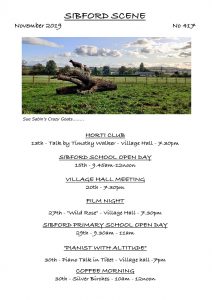Evacuees in the Sibfords (part 1)
During the years of the Second World War the Sibfords received a number of evacuees who were relocated for reasons of their personal safety. The first evacuees to arrive in Sibford were probably a few foreign Jewish children who arrived in the village during the year or so before the outbreak of war. They attended Sibford School in the Ferris and lived with village families.
At the outset of war in 1939, evacuation was largely organised by the government and mainly involved schoolchildren and their teachers. Adults, however, in general made their own arrangements and Leonard Lamb remembered the plans made at his family home – Grounds Farm in the Ferris – to prepare to accommodate family groups. He recalled that parts of the Farmhouse, previously used to incubate chickens and other accommodation dedicated to farm-related activities were cleared and occupied by about six family groups, couples or singles.
The main farmhouse had been empty for several years when war broke out. Jack and Emmy Vinney with their daughter Dolly were the first evacuees to come to live in the big house. Emmy was a cousin of Len’s father, Fred Lamb. Jack soon found work in the village, painting and decorating, and soon there were three more families living there. The largest of these were the Moons – Mrs Mary Moon, Mr Cyril Moon, Aron, Margery, Jonathan and Edward (who was a baby when they came). Kathleen, a further daughter, was born after they left. Mrs Moon was sister to Miss Simmons who was the nurse at the Friends School at the time. Some of the Moon family are still in touch with the Lamb family.
Mr and Mrs Ryder and their son Harold came to stay with them whenever they could. Two middle-aged sisters, the Misses Enever, also lived in the Farmhouse with their nearly blind father. There were others at various times – Pam Green and her mother and Hilda Dixon who was a distant relative. Mrs Green and the Ryders eventually went to live in Burdrop.
It is amazing to think that all these people lived there with no electricity or telephone and the only water was from a private supply to one tap in the back kitchen at the north end of the house. There was no road to the house at that time and no deliveries of any kind. Their coal ration was delivered to Woolman Cottage on the Hook Norton Road. The coal was transferred to a handmade trailer, hitched to the back of a bicycle and pedalled across the grassy fields to Ground Farm – a hundred weight at a time. Woolman Cottage no longer exists and was demolished along with four other thatched cottages when Cotswold Close was built.
Maureen Hicks
